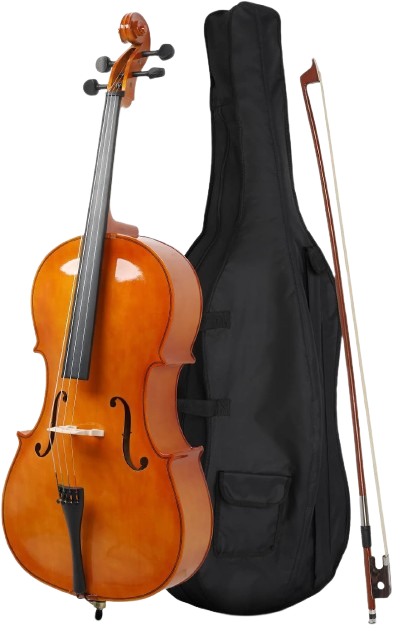You Won’t Believe What This Budget Ktaxon Cello Can Do!
The Ktaxon Cello Full-Size is often marketed as a beginner instrument that comes at a low price. Many new players look for a cello that is affordable and works well enough to help them learn to play. This review is written in plain language to provide all the details you might need if you are thinking of getting this instrument. We will cover the parts of the cello, how it is built, how well it stays in tune, the quality of its strings and accessories, the sound it produces, and whether its price is worth it.
Some people have enjoyed the opportunity to start playing the cello with an affordable option. Others have reported some problems that might affect the learning experience in the long run. In this review, we will look at these different points and try to present a clear view of what this cello can do for its users. The review is based on user experiences and available information from sources such as online reviews. It is meant to offer a balanced perspective that does not exaggerate the benefits or hide the issues.

Build Quality and Structure
One of the first things that many people look at in any musical instrument is the build quality. The Ktaxon Full-Size Cello is made to be affordable. Because of this, the materials and construction techniques may not be the same as those used in more expensive, professional cellos.
Materials and Construction
The cello’s body is mostly made from laminates or less expensive types of wood. This is common in instruments made for beginners. While professionals often get instruments made from solid wood, the Ktaxon uses materials that keep the cost low. Some users say that the finish on the cello is acceptable for the price they paid. However, many have pointed out that the glue used in the construction does not seem to hold the parts of the instrument together very well. For example, there have been several reports where the neck of the cello starts to come loose from the body after a few months of use. One report mentioned that even with minimal playtime the neck and body connection became a problem.
Structural Concerns
Many users have described issues with the joint between the neck and the body. Over time, this junction tends to loosen. This can lead to an unstable instrument, and in some cases, the neck may even separate from the body altogether. The separation is more than a minor inconvenience because it may leave the player with an instrument that is not safe to use. A few buyers noted that their cello needed repairs within six months, which raises concerns about long-term durability.

Stability Over Time
Apart from the neck issue, some users report that the overall structure of the instrument lacks the rigour found in more expensive cellos. The parts of the cello sometimes shift or get misaligned during normal play. This misalignment can affect not only the looks of the instrument but also the ease of playing. The body of the cello is designed to amplify sound, and any changes in its shape can affect sound quality. Even if the damage is not immediately visible, a shaky structure can lead to long-term issues.
For someone who plans to practice a lot or even consider a career in music, structural stability is important. While many beginners do not have the budget for a professional grade instrument, a cellist’s early experiences can influence the decision to continue with the instrument. It is important to understand that the low price of the Ktaxon comes with trade-offs in terms of construction quality. This review will go into the details of these issues so you are fully informed before you make a purchase decision.
Setup and Tuning Performance
A crucial aspect of a string instrument like a cello is its ability to stay in tune over time. The Ktaxon Full-Size Cello has faced many reports related to tuning stability, and this affects both the practice experience and learning curve for new players.
Tuning Pegs and Their Performance
The tuning pegs are responsible for holding the strings in tune. In this model, many users have shared that the pegs tend to slip. When tuning pegs slip, they do not hold the tension of the strings well, and the instrument goes out of tune quickly. In some reviews, buyers mention that even after careful tuning, the cello cannot stay tuned for longer than a few minutes. This is particularly problematic when you are trying to practice because you have to stop frequently to retune the instrument.
Some players have tried using extra accessories or taking extra care during tuning, but the problem persists. One common observation is that the tuning pegs require extra force to keep the strings at a proper tension level. This extra force might create undue pressure, which in turn can lead to damage in other parts of the instrument, such as the pegs or the neck. For a beginner who is still learning to tune by ear or with the help of a tuner, this issue can be very discouraging.
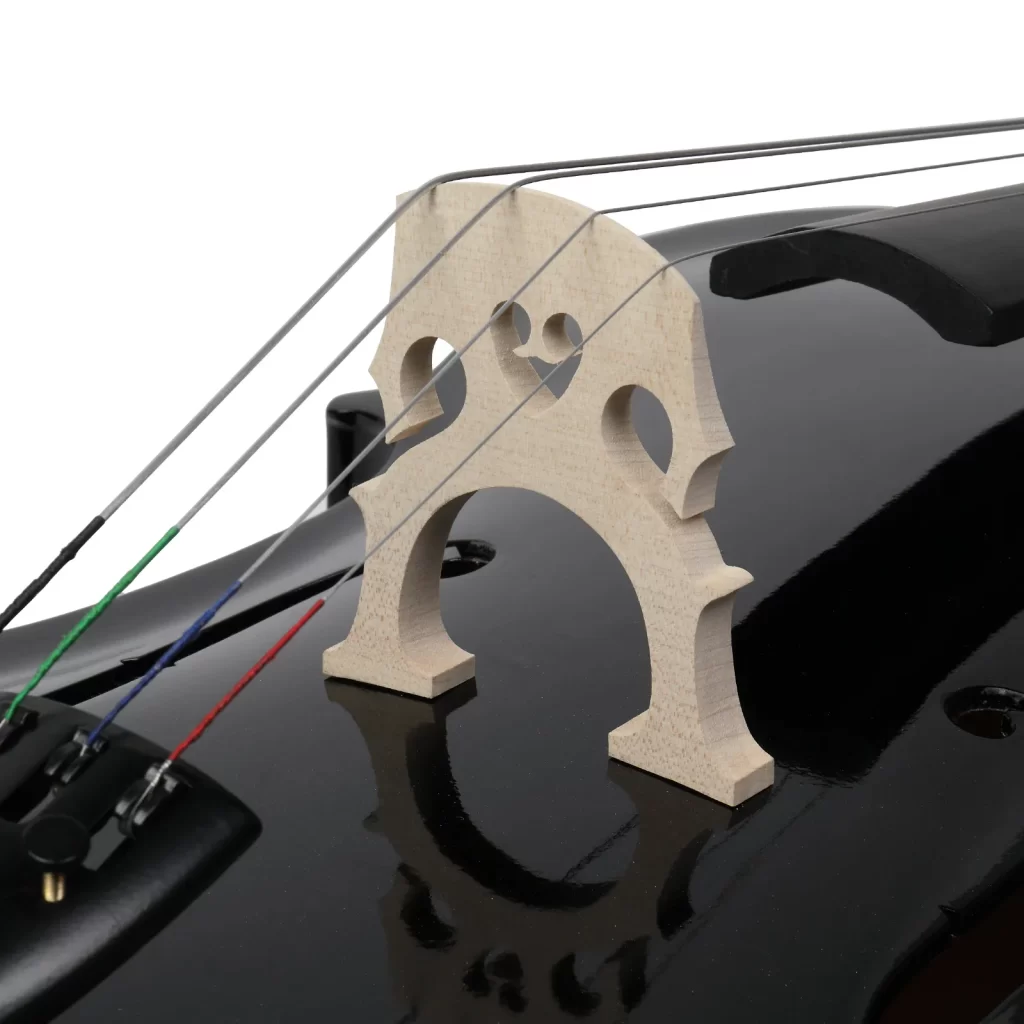
Effect on Practice Sessions
If an instrument is difficult to keep in tune, it can affect your overall practice routine. When you spend too much time tuning and not enough time playing, you are likely to get frustrated. This frustration can lead to missed opportunities for learning and improving your technique. In many reviews, the tuning issue was one of the most common complaints. The instrument’s inability to hold tune means that every few minutes, a player must stop and re-tune the cello. Consistent interruptions like this are not ideal for regular practice.
Potential Causes
The problem with the tuning pegs may be due to how the cellos are constructed on the inside. In cheaper manufacturing processes, less care is given to how the pegs and surrounding areas are fitted. This can lead to a situation where the instrument might not have the right alignment or stable fixation to keep the pegs securely in place. Sometimes, the slipping of the tuning pegs is also related to the quality of the wood. If the wood is not stable or if it expands and contracts with temperature or humidity changes, the pegs may lose their grip.
For a beginner instrument, this kind of setup and tuning performance is disappointing. It is important to understand that not many high-quality items are expected at such a low price, but even then, the tuning issues can be seen as a drawback. Keeping an instrument well-tuned is not just for the sound but also for the overall feel when you play.
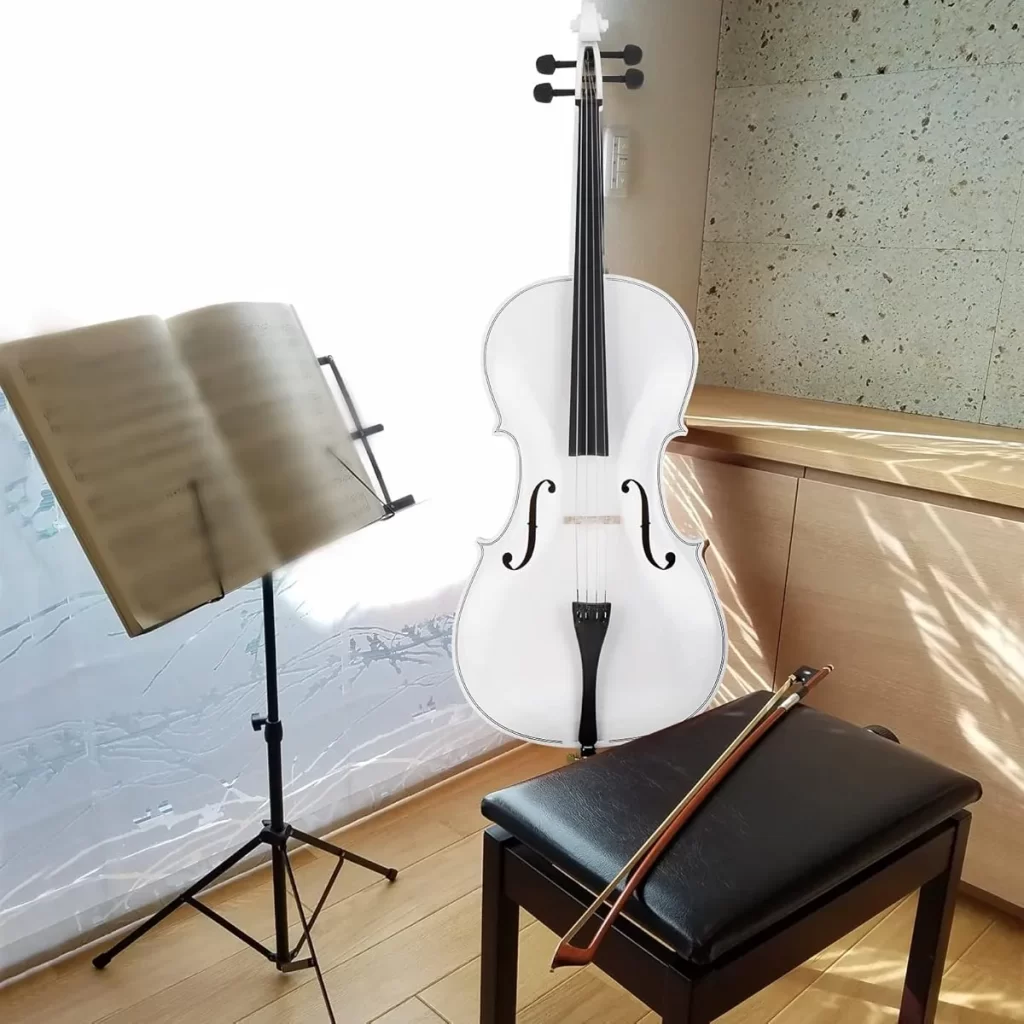
String and Accessory Quality
Another important area of concern for the Ktaxon Full-Size Cello is the quality of the strings and accessories that are included with the instrument. This section will go over the experience many users have had with the strings, as well as the other items that come with the cello, such as the bow and the rosin.
Strings
Strings are a critical component of any string instrument. They are what actually produce the sound when rubbed by the bow or plucked by the fingers. In the case of the Ktaxon cello, several users have reported problems with the strings breaking. Breakages occur during tuning or after only a short period of play. Frequent string breakage not only interrupts practice but also incurs additional costs for replacements.
Some buyers have mentioned that they had to replace their strings multiple times within a few months of receiving the cello. This is not just an inconvenience; it also implies that the strings provided as standard may not be of high quality. For someone on a tight budget, this can add up over time. Additionally, the need to frequently change strings suggests that the overall durability of the instrument is lacking when compared to other beginner cellos.
Bow Quality
The bow is equally important for producing good sound and for overall playability. The quality of the bow that comes with the Ktaxon Full-Size Cello is often described as low. Several users have indicated that the bow does not have the right balance or weight needed for an instrument of its size. The bow might be too light, too heavy, or simply not well balanced. This can affect the contact between the bow hair and the strings, reducing the sound quality during play.
For beginners, learning how to use a bow properly is crucial, and having a poorly made bow can hinder this learning process. A bow that is not good may result in a dry or weak sound, making it hard for a student to hear the full range of tones that a cello should produce. Moreover, a bad bow may even be a safety hazard if it loses its balance during vigorous playing.
Rosin and Other Accessories
The Ktaxon Full-Size Cello usually comes with a small amount of rosin. Rosin is used to create friction between the bow and the strings, which helps to produce sound. Some players find that the rosin provided is not very good. A low-quality rosin can result in a less effective grip on the strings and, as a consequence, poor sound production. When beginners are trying to learn how to control their bow, having an inconsistent accessory like poor rosin can add to their struggle.
In addition to rosin, there might be other included accessories such as a case or spare strings. The quality of these items is also important because they are part of the overall package. If the case is not sturdy, it may not protect the instrument well during transport. For beginners who may not invest in a separate, high-quality case, this is a serious consideration.
Overall, the quality of the strings and accessories plays an essential role in whether the instrument remains practical and enjoyable to use over time. For the Ktaxon Full-Size Cello, the recurring theme of poor string quality and inadequate accessory performance is a significant drawback. It means that even if the body of the cello were acceptable, the supporting parts could reduce the overall playing experience.
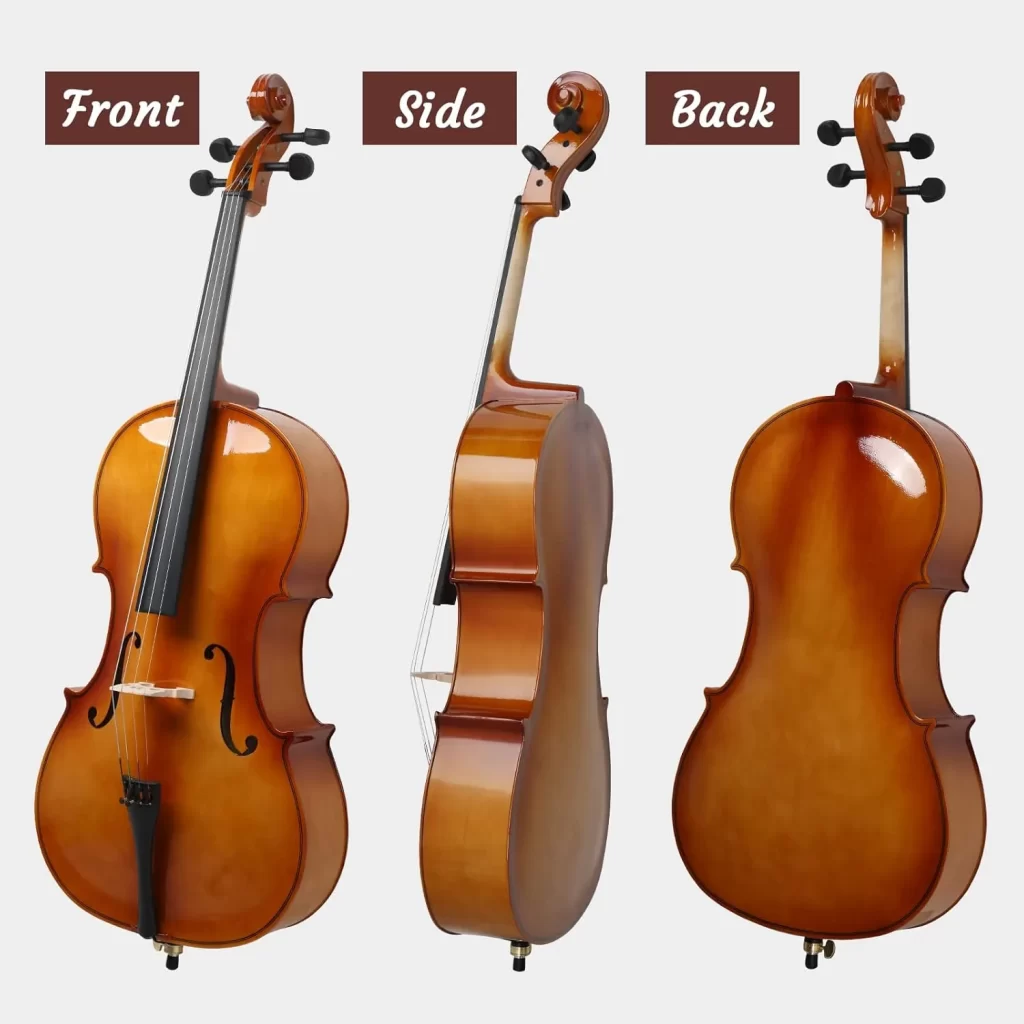
Sound Quality and Tone
The most important measure of any musical instrument, especially one like a cello, is the sound it produces. The tone, resonance, and overall sound quality are what make the instrument enjoyable and useful for learning and performance. For the Ktaxon Full-Size Cello, the sound quality is one area where opinions are mixed.
Basic Sound Production
Many players report that the Ktaxon Full-Size Cello can produce an acceptable sound given its price range. Beginners on a tight budget might find that the sound is satisfactory for learning the basics of cello playing. However, there are several caveats to consider. For a beginner, it is important that the tone is clear and consistent, so every note can be heard properly. Some users have said that when they first played the cello, they were able to produce a sound that, while not perfect, did allow them to learn the position of their fingers and the basic techniques of bowing.
Issues with Consistency
Despite some positive remarks on basic sound production, many reviews note that there is a lack of consistency in tone quality. Because of issues with the construction and the way the cello is tuned, the sound sometimes comes out weak or flat. A common problem is that the cello does not maintain the proper resonance needed for deep and rich tones. Instead, the sound might be thin or harsh during long playing sessions. This inconsistency is a direct result of both the structural problems and tuning issues that were noted earlier.
The Impact of Tuning and Structural Flaws
The ability of the cello to stay in tune is very important to maintaining quality sound. When the tuning pegs slip or if the instrument has structural issues, the sound suffers. In many cases, the inconsistency with the tuning means that a note that sounded good a minute ago might sound off the next time it is played. This makes it more challenging for the player to master scales and more advanced techniques. A consistent tone is important because it reinforces muscle memory and helps develop an ear for fine differences in sound. For many players, having to constantly retune the instrument due to slipping tuning pegs or wood that moves with changes in temperature means that the overall sound quality suffers.
Comparison to Higher-End Instruments
While the Ktaxon Full-Size Cello may be good enough for absolute beginners, it does not compare favorably to mid-range or professional-level instruments in terms of sound. When you listen to a well-made cello, the sound is full, clear, and resonant. Many reviewers have commented that, in contrast, the Ktaxon tends to produce a sound that lacks depth. The lower quality of the materials used in its construction means that the body does not vibrate as efficiently as that of a more expensive cello. This results in less projection and a weaker tonal quality.
Room Acoustics and External Influences
It is also important to note that the sound quality of the Ktaxon cello can be affected by external factors such as room acoustics and the set-up of the instrument. For some players, a room with good acoustics may help mask some of the shortcomings of the instrument. In a well-treated room, even a lower quality instrument might sound acceptable. However, for practice sessions at home or in environments that are not acoustically optimized, the sound quality can be noticeably poor. The overall impression is that the cello’s sound is best when played in ideal circumstances, which are not always available to every player.
Subjective Impressions
Sound quality is a subjective matter. While one player might find the sound acceptable for learning and early practice, another might find it too thin or inconsistent for regular use. Most reviews indicate that if a beginner uses the cello just to get started, the sound may be acceptable. But for students who want to progress to more advanced pieces or perform in a group, the sound issues can become more problematic. Being aware of these issues early on can help set the right expectations for new players.

Playability and Ergonomics
When it comes to the Ktaxon Full-Size Cello, playability is just as important as sound quality. The instrument should be comfortable to hold, and its dimensions should allow for ease of practice. In this section, we look at the setup, ergonomic design, and overall ease of playing the instrument.
Handling the Instrument
One of the benefits cited by some users is that the cello is the right size for beginners. Being full-size means that the instrument has the correct proportions, and the fingerboard is long enough for players who are just starting. However, because of the structural issues already mentioned, the way the instrument feels when played may not be as consistent as it should be. When parts of the instrument are loose or do not feel securely fitted, a player might notice that the feel of the instrument changes during practice. This can affect the overall learning experience, especially if you rely on muscle memory to perform scales and arpeggios.
Ergonomic Considerations
Ergonomics in a musical instrument is about how the design fits with the natural movements and posture of the player. The Ktaxon Full-Size Cello does not always meet the ideal standard. Some users have noted that the shoulder rest and other support elements do not provide enough comfort over long periods of practice. This might lead to discomfort in the back or shoulders during extended sessions. For a beginner, being comfortable is very important because it helps you focus on learning correct technique. Small issues in the design can add up to become a larger problem over time.
Impact of Structural Flaws on Playability
The previously mentioned structural concerns are not just visible in the wood or the glue joints; they also affect the feel of the instrument. A neck that is not securely attached may not provide a stable playing surface. This means that every time you press down on a string or slide your fingers along the fingerboard, you might notice a slight wobble or shift. Such irregularities can hinder the development of proper finger positioning and technique. When you are learning an instrument, consistency and reliability in the feel are key. A cello that does not offer that may frustrate beginners.
Balance and Weight
The balance of the instrument is another factor that affects playability. A well-balanced cello will sit comfortably in your playing position without needing extra support or adjustments during play. In reviews of the Ktaxon Full-Size Cello, many players have observed that the instrument can feel either too light or imbalanced. This imbalance may also be linked to the construction issues that occur when the glue or joint quality is not up to the mark. An imbalanced instrument forces the player to consciously adjust their posture, which can lead to fatigue or even injury over long practice sessions.
String Response Under Bow
How the strings respond to the bow is a direct measure of playability. Because of the frequent need for retuning and the inconsistency in string quality, players might also experience difficulty in producing a uniform tone across all notes. When an instrument’s strings are not in the proper tension or if they break often, the overall feel of playing can be erratic. For a beginner who is still developing bowing technique and finger placement, these issues can lead to frustration and slow progress. A stable, predictable string response is critical to learning to control the sound and achieving better intonation.
Practical Considerations for Beginners
For many beginners, the goal is to practice as much as possible without interruption. If the instrument feels unstable or if the tuning issues mean frequent breaks in practice, it can be a significant hindrance. The ideal beginner instrument should have a consistent feel, a secure build, and reliability that gives you confidence every time you pick it up. Unfortunately, the Ktaxon Full-Size Cello might not always offer this. The way the instrument is built and the problems that have been noted in several user reviews all add up to make it less than ideal for sustained practice sessions.
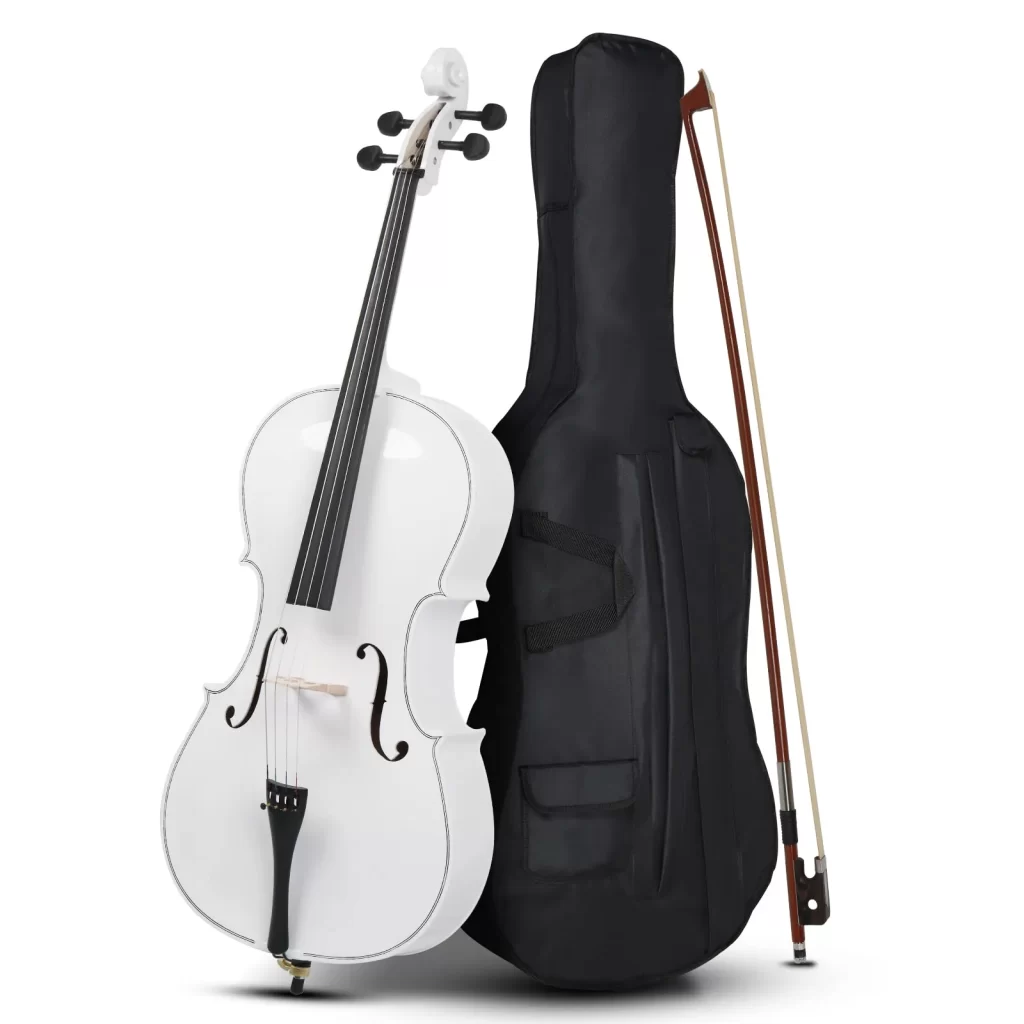
Price and Value Considerations
One of the main attractions of the Ktaxon Full-Size Cello is its low price. Many beginners choose this instrument because it is an affordable entry into playing the cello. However, the price must be considered in relation to the quality and long-term performance of the instrument.
Low Initial Cost
The low initial cost is a significant factor for someone who wants to start playing the cello without spending a large sum of money. For someone who is not sure if they will continue with the instrument, getting a low-cost option can be a safe bet. Many beginners find that this approach allows them to try out the instrument and decide if they want to invest further into their musical education. The affordability makes it accessible to many people who might otherwise be discouraged by the high prices of other cellos.
Additional Costs Over Time
Even though the starting price is low, many users report that there are additional costs involved over time. The need to replace strings frequently, repair structural issues, or even buy a better bow and rosin are all added expenses. Some reviews have mentioned that the cost of these additional items can add up to more than what one might spend on a more reliable beginner instrument. This means that while the instrument is initially affordable, the total cost of ownership might become higher than expected.
Value for a Beginner
For a beginner, one has to weigh the cost against the expected performance and longevity of the instrument. If the instrument does not last long or if it interferes with the learning process because of issues like poor tuning stability or structural weaknesses, the low price might not justify the investment. In other words, a low price might make sense on paper, but if you spend a lot of time and money on repairs or upgrades, then the overall value becomes questionable.
Long-Term Considerations
If you are considering a longer journey in learning the cello, investing in an instrument that holds up over time is important. The Ktaxon Full-Size Cello might be suitable for a very short-term trial, but its issues with tuning, build quality, and playability might discourage continued study. Many players note that, compared to other instruments in a similar price range, the Ktaxon has a number of drawbacks that can lead to frustration as skills improve. At a certain point, the instrument might limit progress, forcing the player to invest in a higher quality cello sooner than planned.
Comparison with Other Options
When evaluating the value of any musical instrument, it is useful to compare it with similar products. There are other beginner cellos on the market that might be priced higher initially but offer better build quality, more stable tuning, and a more consistent sound. Even if their first cost is greater, the long-term satisfaction and ease of playing might make them a better investment overall. For someone who is serious about learning the cello, considering these trade-offs is important. While the Ktaxon Full-Size Cello remains an attractive option for those on a very tight budget, it might fall short when it comes to overall value and durability.
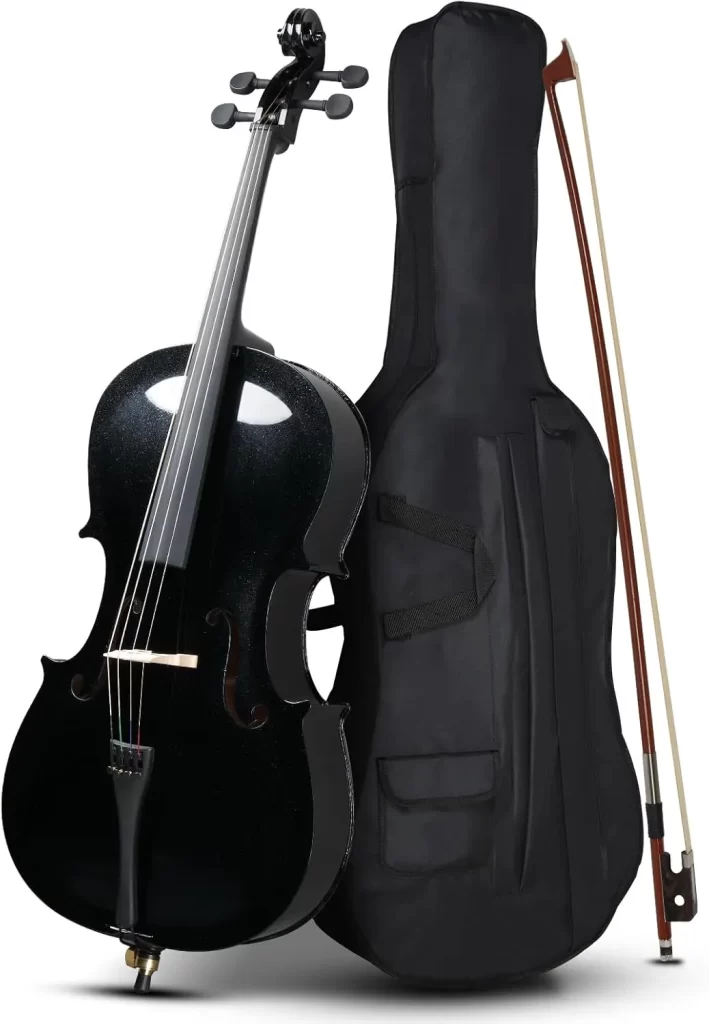
Who Should Consider the Ktaxon Full-Size Cello?
Not every beginner will be affected by the issues mentioned in this review. However, it is important to decide if this instrument fits your needs and long-term goals in music.
Absolute Beginners and Explorers
If you are just starting out and are uncertain about your long-term commitment to the cello, the Ktaxon Full-Size Cello might be a practical choice. It provides an inexpensive way to explore the instrument and learn the basics of finger placement, bowing, and reading music. For someone who is trying the cello for the first time, an affordable model can offer an entry point without a large financial commitment.
Budget-Conscious Learners
Many people choose this cello because of its low cost, which is a major benefit if you have limited funds. For a person who is balancing their budget and is unsure about investing heavily in a musical instrument, starting with a low-priced option might seem appealing. However, keep in mind that if the instrument needs repairs or if you need to replace many of its parts, it could end up costing more than expected over time.
Those with Limited Practice Space or Time
For someone who only plans to practice occasionally or who is learning as a hobby, the shortcomings of the Ktaxon might be less significant. If you do not plan long practice sessions or if you only practice in an environment where constant retuning is not a big issue, then the faults in tuning and sound might be manageable. In such cases, the low cost may be a good trade-off for an instrument that offers basic functionality without excessive initial investment.
Future Commitment to the Instrument
A key point to consider is your own commitment to learning the cello. For players who eventually wish to perform or study the instrument seriously, an entry-level instrument is only the first step. It is likely that you will need to upgrade to a better quality instrument once your skills improve. The Ktaxon Full-Size Cello might be acceptable for a trial period, but its issues with build quality and consistent sound may hamper progress if you choose to rely on it for too long. In the long run, a slightly higher initial investment might offer a more reliable tool for growth in your musical abilities.
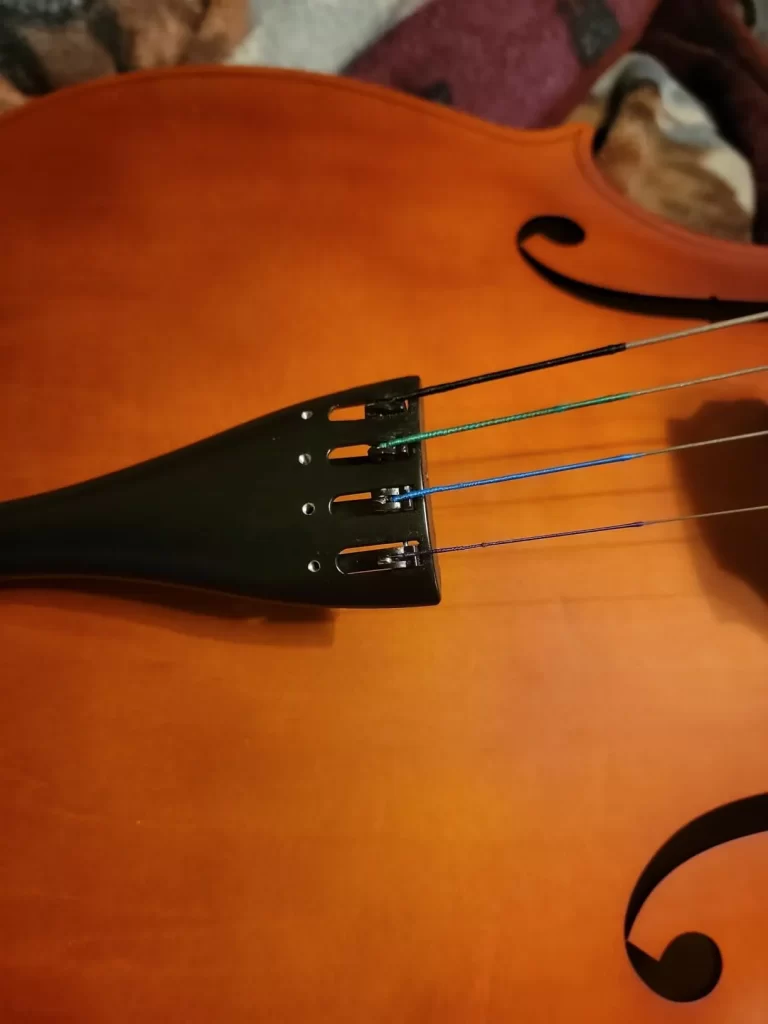
Pros and Cons Summary
To provide a clear overview, here is a summary of the pros and cons based on various user reviews and feedback:
Pros
- Low Initial Cost:
The Ktaxon Full-Size Cello is priced affordably, which can be attractive for beginners who are not ready to invest too much money in their first instrument. - Full-Size Proportions:
The instrument’s size is suitable for learners as it allows players to get used to the dimensions of a standard cello. - Basic Sound Production:
For the very basics of learning how to play, the cello can produce a tone that is acceptable in simple practice sessions.
Cons
- Build Quality Issues:
There are multiple reports of the neck and body connection failing over time. Many users have experienced the neck detaching or the glue not holding well, which compromises the instrument’s structure. - Tuning Difficulties:
The tuning pegs are prone to slipping. It becomes hard to maintain a stable tuning, which interrupts practice and can lead to frustration. - Poor String and Accessory Quality:
Strings tend to break frequently, and the accessories such as the bow and rosin are of low quality. Replacement costs for strings and the need for a better bow can add up quickly. - Inconsistent Sound Quality:
The cello produces a sound that many find inconsistent, thin, or weak. The structural issues and tuning problems play a big role in the overall tone and sound production. - Limited Long-Term Use:
While the instrument may serve well for very short-term use, its shortcomings suggest that it might not be a good choice for someone who plans to learn the instrument over many years.
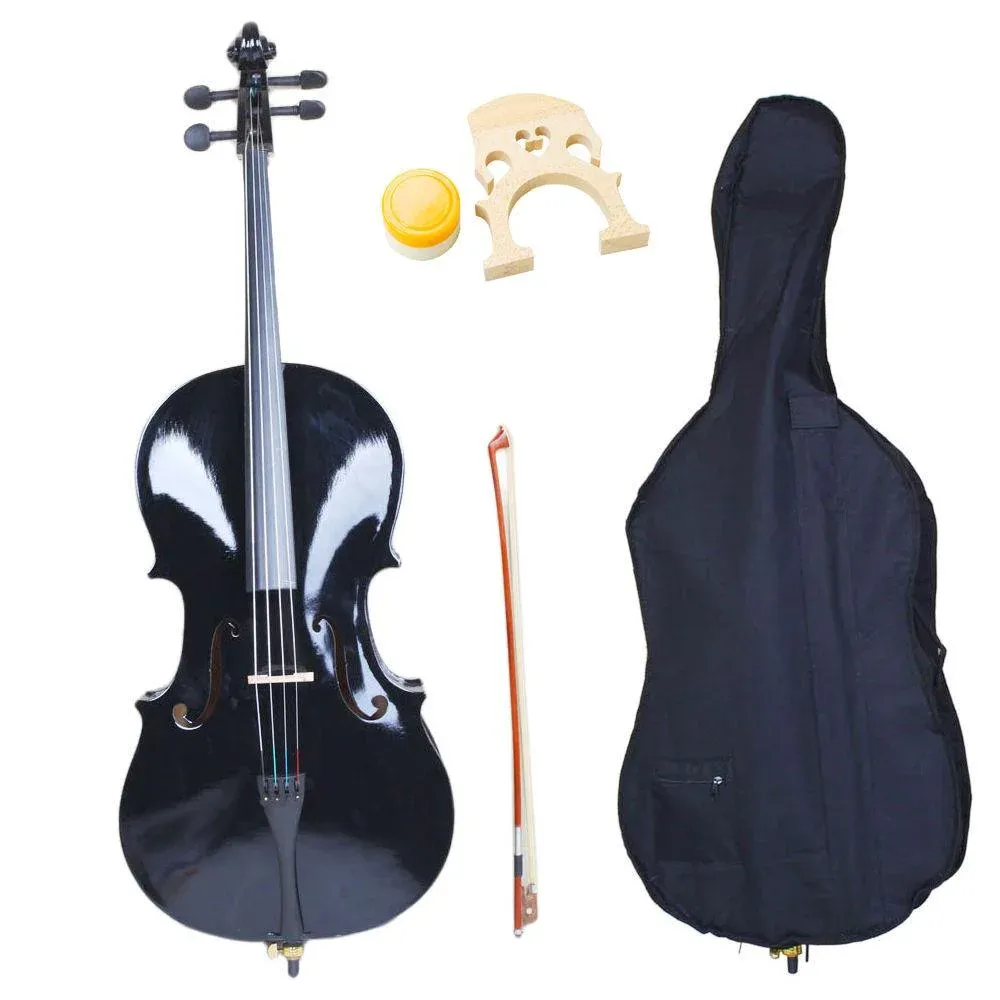
Detailed User Experiences
Structural Failures Over Time
Many reviews mention that even when the cello is handled with care, the structure shows signs of deterioration. For instance, some users have reported that the neck of the cello does not remain securely attached after a short period of use. In a few cases, even after minimal usage, the neck begins to show signs of being loose. For a beginner who is just starting to explore proper playing techniques, this kind of structural failure can disrupt learning. When parts of the instrument do not hold together well, it becomes hard to trust that the instrument will last beyond a few months.
In several user experiences, it was noted that the poor quality of the glue and construction was a major factor. A small separation or the need for frequent adjustments detracts from the overall experience and reduces confidence in the instrument’s longevity. It is important to understand that, with an instrument of this price range, some risk of such issues may be expected, but the frequency and severity of these issues have been enough to make several users reconsider their choice.
Tuning and Retuning: A Never-Ending Cycle
Another recurring theme in user feedback is the constant need to retune the instrument. For a string instrument, maintaining proper tension in the strings is essential. In many cases, the tuning pegs were reported to slip right after tuning, making it hard to hold the correct pitch. A player might find that their practice session is constantly interrupted by the need to adjust the tuning. This is particularly challenging for a beginner, who may already be struggling with finger positioning and learning new scales.
For someone learning how to play the cello, consistency in tuning is one of the building blocks of musical practice. The lack of tuning stability not only affects the sound but also creates an extra hurdle that delays progress. The need to stop and retune multiple times in a short period of time can be very discouraging and can affect overall motivation. When you are constantly fixing a problem that should not be there in the first place, it takes away from the joy of learning and playing music.
Issues with Strings and Additional Costs
The quality of the strings that come with the instrument is another point of concern. Many users have reported that the strings break often. Because the instrument is not built with high-quality materials, the strings are prone to snapping either during tuning or after only a small number of hours of playing. Every time a string breaks, you must pause your practice to replace it. This leads to interruptions in learning sessions, and for a beginner, this can be very frustrating.
In addition, the cost of replacing strings – especially if they need to be replaced frequently – can add up quickly. What starts as a low-cost investment in the instrument may end up requiring additional expenses for proper maintenance and usability. The need to buy a better quality bow and rosin further adds to the overall cost, making the instrument less attractive when considering total ownership costs.
Sound and Tone: Inconsistent and Unreliable
The sound quality is a make-or-break factor for any musical instrument. For the Ktaxon Full-Size Cello, users have reported that the sound is often thin and inconsistent. In some cases, the tone can be acceptable for very basic practice, but it does not meet the expectations that many players have for a full-size cello. A good tone should be clear, deep, and consistent across different dynamic levels. However, the complaints about this instrument suggest that the sound suffers because of the tuning problems and poor construction.
Some players have noted that when the instrument is used in an ideal room with good acoustics, the sound might be passable. But under typical home conditions, the sound quality drops noticeably. The lack of resonance from the body of the instrument and the poor vibration response from the wood can lead to a very flat and unsatisfying tone. Over time, as players try to expand their skills, these issues become more pronounced. A clear, consistent tone is vital for learning how to shape sound with subtle movements of the bow and precise finger placements. Without that, developing advanced skills is much harder.
Handling and Comfort: The Impact on Practice
For musicians, the comfort of playing an instrument is as important as the quality of the sound it produces. In the case of the Ktaxon Full-Size Cello, comfort has been a mixed issue for many players. On the positive side, the cello is of full size, which means that for many beginners it feels appropriately proportioned when held properly. However, the problems with the structural build and the lack of a secure fit in some areas make long practice sessions less comfortable.
The shoulder rest, which is designed to help with holding the instrument, is sometimes not up to the mark. Users have mentioned that over long practice sessions, the discomfort becomes noticeable. If the instrument feels unstable or if parts of it seem misaligned when in use, it can detract from the overall experience of playing. Comfort is a crucial part of learning because it allows for longer sessions without physical strain. When an instrument is not comfortable, beginners might not practice as much as they need, and this can hinder progression.
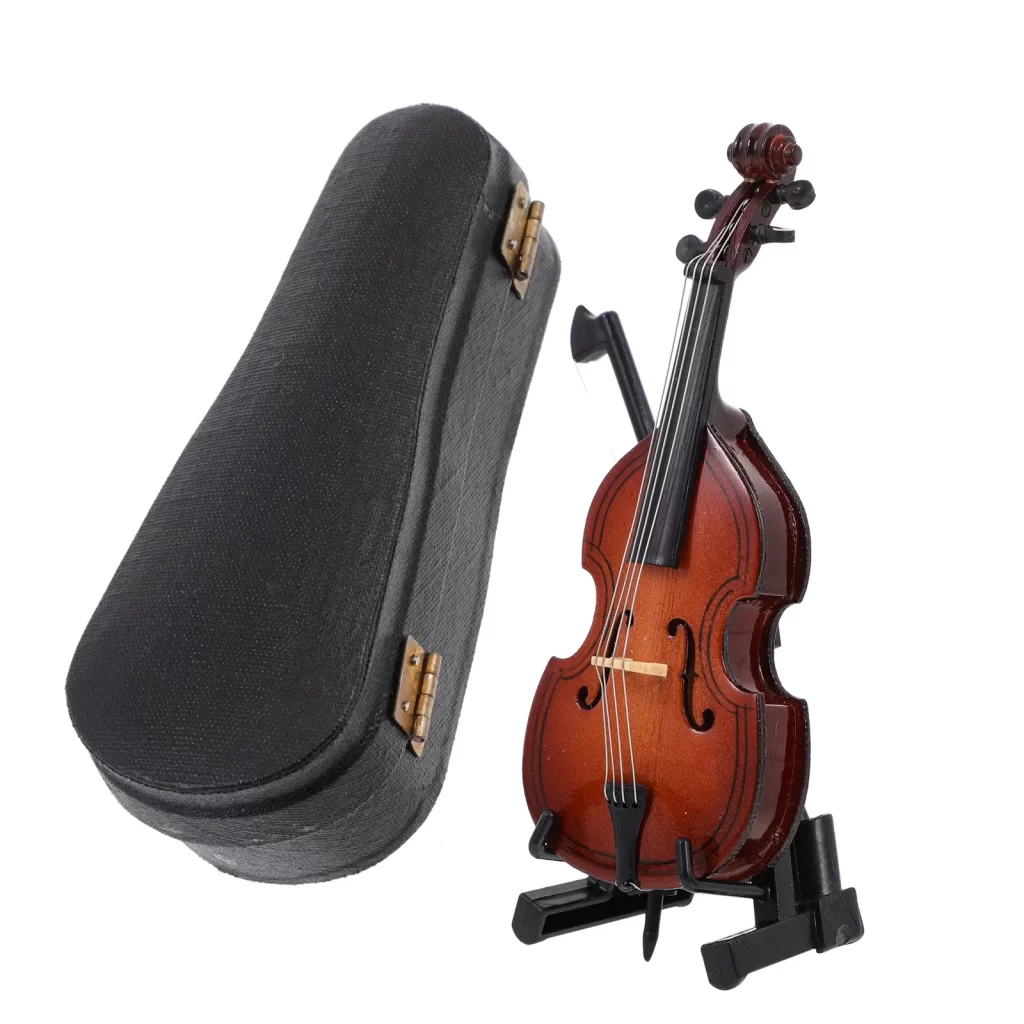
Overall Impressions and Final Thoughts
In summary, the Ktaxon Full-Size Cello serves as an entry point into the world of string instruments for those who are very careful with their budgets. It provides a means for absolute beginners to learn the basics of playing the cello. However, as detailed above, there are many issues that come with the low price. These include structural deficiencies, frequent tuning problems, subpar string and accessory quality, inconsistent sound production, and limitations in comfort and ergonomics.
Balancing Cost Against Quality
The low cost of the Ktaxon Full-Size Cello is the main reason many beginners might consider it. If you are unsure about your long-term commitment to the cello, starting with an inexpensive model might seem like a good idea. However, you must consider that the problems related to build quality, tuning, and sound can disrupt your learning process. In the long run, you might spend additional money on repairs, replacements of strings, and even a better bow. All these extra costs can add up, potentially making the initial low price a false economy.
The Learning Experience
For anyone who plans to learn an instrument, the quality of the initial experience is very important. A cellist’s early lessons set the stage for how they will continue learning and growing. Frustration due to constant tuning issues, physical discomfort during practice sessions, or disappointment in the sound quality can reduce your enthusiasm. If you are starting out on the cello, you want an instrument that is reliable enough to let you focus on improving technique and learning the basics, rather than fixing the instrument. With the Ktaxon Full-Size Cello, these recurring problems could make your early practice sessions less enjoyable and might even discourage you from pursuing further study.
Impact on Skill Development
The issues with the instrument have a direct impact on skill development. When you have a cello that is unstable, it is harder to develop consistent finger placement and bowing technique. The constant need for retuning means that you are not always practicing your scales or pieces in a stable way. This inconsistency can slow down the progress in learning the instrument. For a beginner trying to build a strong foundation in music, a reliable instrument is very important. Over time, using an instrument that struggles with basic functionality may result in frustration and a slower learning curve.
Summary of Key Points
To put it all together:
- The Ktaxon Full-Size Cello is low in cost but tends to have issues in construction that result in the neck and body connection weakening over time.
- Tuning problems are common due to the slipping of tuning pegs, which leads to repeated interruptions during practice sessions.
- The strings that come with the instrument break more frequently than expected, and the accessories – such as the bow and rosin – are often of low quality. These issues create additional financial burdens, as replacements are needed.
- The sound quality of the cello is inconsistent and often described as thin or flat. In many cases, the resonance and tonal depth do not meet the expectations of those who are learning to play.
- While the full-size design and basic functionality may be acceptable for an absolute beginner or someone with limited practice time, the instrument has several shortcomings that could hinder long-term progress.
- Users have noted that even though the initial cost is attractive, the overall value is questionable when you factor in extra expenses for maintenance and potential repairs.
- The physical feel of the cello can be negatively affected by structural flaws, leading to discomfort during practice. This issue, combined with other factors, makes it less ideal for someone planning to invest in long-term study.
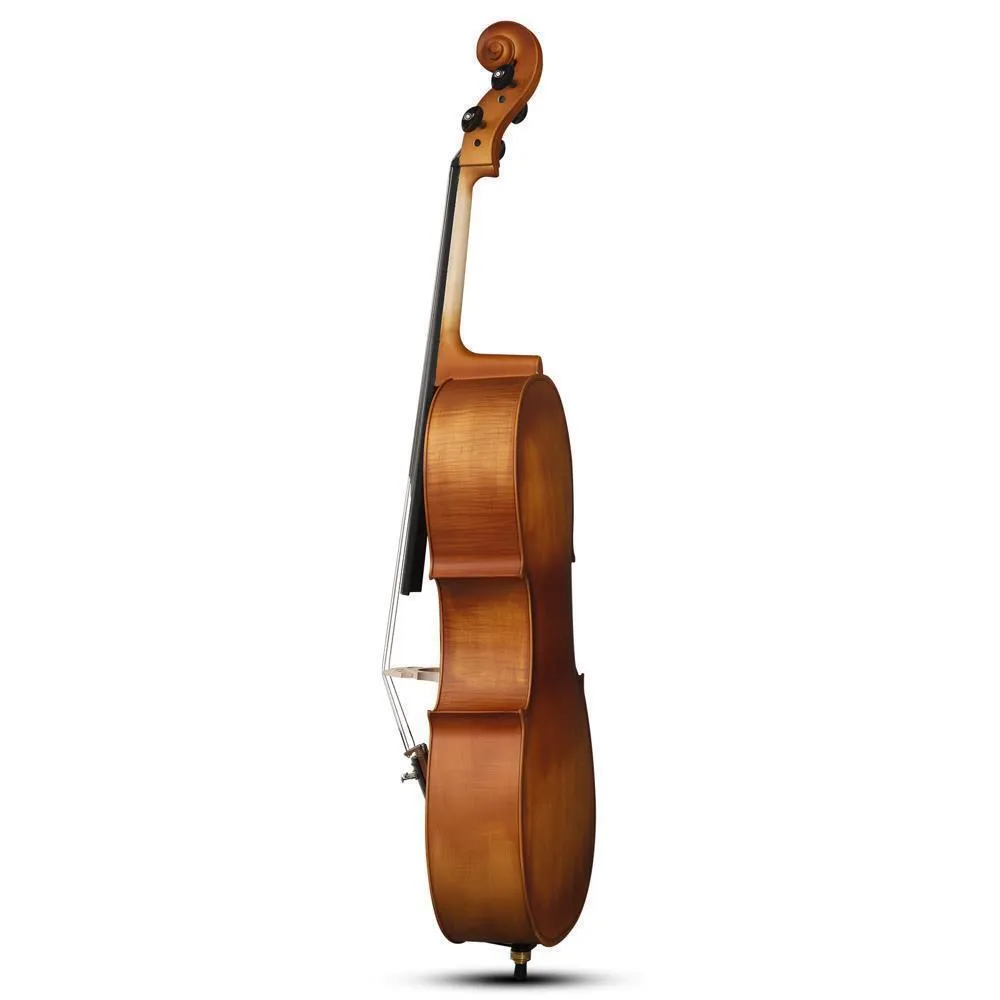
Recommendations and Final Reflections
Based on these observations, anyone considering the Ktaxon Full-Size Cello should carefully weigh the pros and cons. If your budget is extremely limited and you are mainly curious about learning the basics, this instrument might work for you in the short run. However, if you are serious about your musical journey and think you might continue playing for years, you may want to think about investing in an instrument that is more stable and reliable.
Short-Term Use Versus Long-Term Investment
The Ktaxon Full-Size Cello can act as a temporary stepping stone for very new players. It can help you learn the basic notes, simple bowing techniques, and where to place your fingers on the fingerboard. Over time, though, the issues with tuning, structure, and sound quality might force you to look for another instrument. Therefore, it is best viewed as a short-term solution rather than a long-term investment.
Learning Environment
Your learning environment can also influence whether this instrument is a good fit. If you are practicing in a controlled environment with favorable conditions (like a room with decent acoustics and stable temperature), the drawbacks of the Ktaxon might be less noticeable. However, in typical home or school settings where conditions are not perfect, the problems are more likely to affect your playability and overall experience.
Maintenance and Extra Expenses
Keep in mind that buying this instrument might mean you will need to spend additional time and money on maintenance. This includes replacing strings often, possibly repairing structural issues, and even eventually purchasing a better bow or more effective rosin. If you are comfortable with the idea that a lower-cost instrument might have hidden costs, then you can plan ahead and budget for these extras. The point is to be aware that the initial low price is only part of the total cost of enjoying the instrument fully.
Alternatives on the Market
It is also useful to consider alternatives. There are other beginner cellos that might be priced a bit higher but have received better reviews for build quality, tuning stability, and sound. While the Ktaxon may appear attractive for its cost, spending a bit more might save you from the frustration of dealing with multiple issues in a short time. However, if your budget is very tight, the Ktaxon could still work provided you accept the trade-offs that come with it.
Final Thoughts
In the end, the Ktaxon Full-Size Cello is a tool that fits a very specific need—making the cello accessible at a low price for those who are just starting out. It is not a perfect instrument, and many reviews from users point to significant issues that could make practicing and developing your skills more challenging. These include problems with construction, tuning, sound, and overall durability. If you decide that this instrument meets your current needs and budget constraints, it might serve its purpose for a limited period. However, you should be prepared for some extra maintenance and potential early upgrades.
The choice of a musical instrument, especially one as personal as a cello, is not one to be taken lightly. A good instrument should support your learning rather than hinder it. The Ktaxon Full-Size Cello does offer a way to start learning without a high cost, but its shortcomings mean that it might only be a temporary solution. If you are able to eventually invest in an instrument with better quality, that might be the right path if you see yourself continuing to play for the long term.
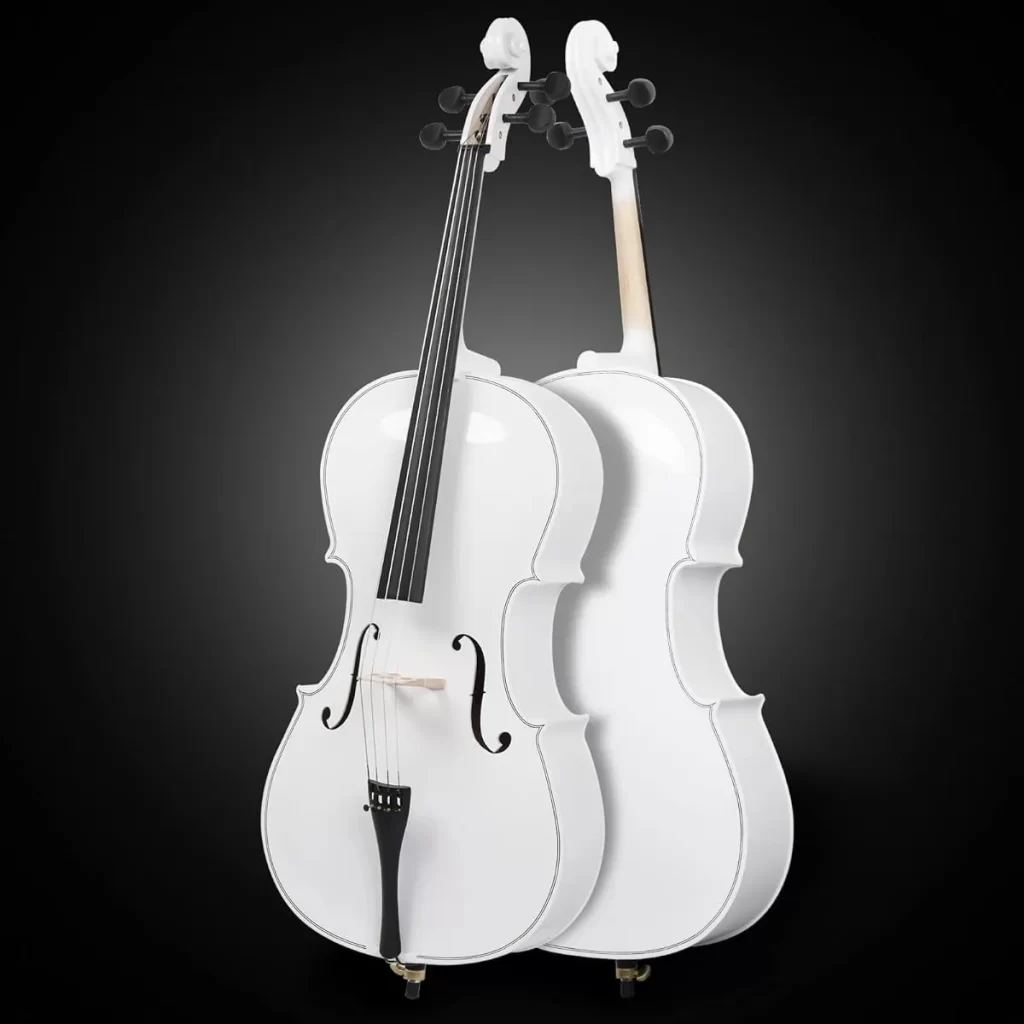
Conclusion
This review has looked at many details about the Ktaxon Full-Size Cello. We covered its build quality, structural issues, tuning problems, and how these affect the sound and playability. We also discussed the quality of the strings and accessories and how they contribute to the overall learning experience. The discussion is based on simple language to ensure clarity, and there is no advertising tone present.
If you are a beginner with a very tight budget who simply wants a chance to start learning the basics of cello playing, this instrument might suffice for a brief period. However, if you value stability, consistency, and durability in an instrument, you might want to look for alternatives that can offer these qualities without the repeated need for repairs or extra accessories.
In summary, while the Ktaxon Full-Size Cello has a very attractive price tag, the reviews and user experiences suggest that its low cost comes with several trade-offs in terms of construction quality, tuning stability, string durability, and overall playability. It can serve as an entry-level option for someone who is just testing the waters of learning the cello, but be prepared for some challenges along the way.
Understanding the importance of each of these factors will help you make an informed decision. Weigh the initial savings against the possibility of spending more on repairs and accessories, and consider whether this might affect your overall learning journey. Only you can decide if the trade-offs are acceptable given your budget and musical goals.
If you choose to start with this instrument, be patient with the learning process and plan for potential extra expenses. If you find that you progress quickly and become more serious about playing, it may be time to look for an instrument that offers better performance and reliability. Remember, every beginner experience is different, and what works for one person might not work for another.
This detailed review should help you understand the pros and cons of the Ktaxon Full-Size Cello in simple and direct terms. The goal is to equip you with the information you need to make an informed choice that best fits your musical journey and financial situation.
